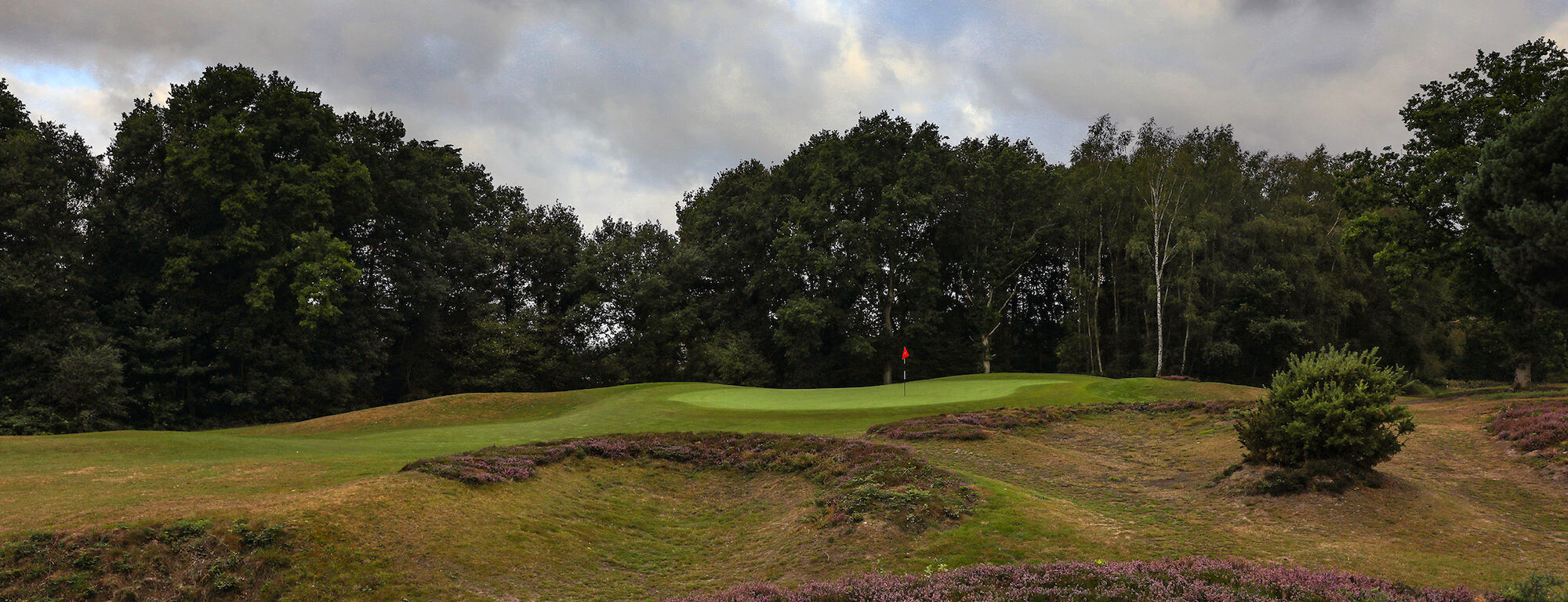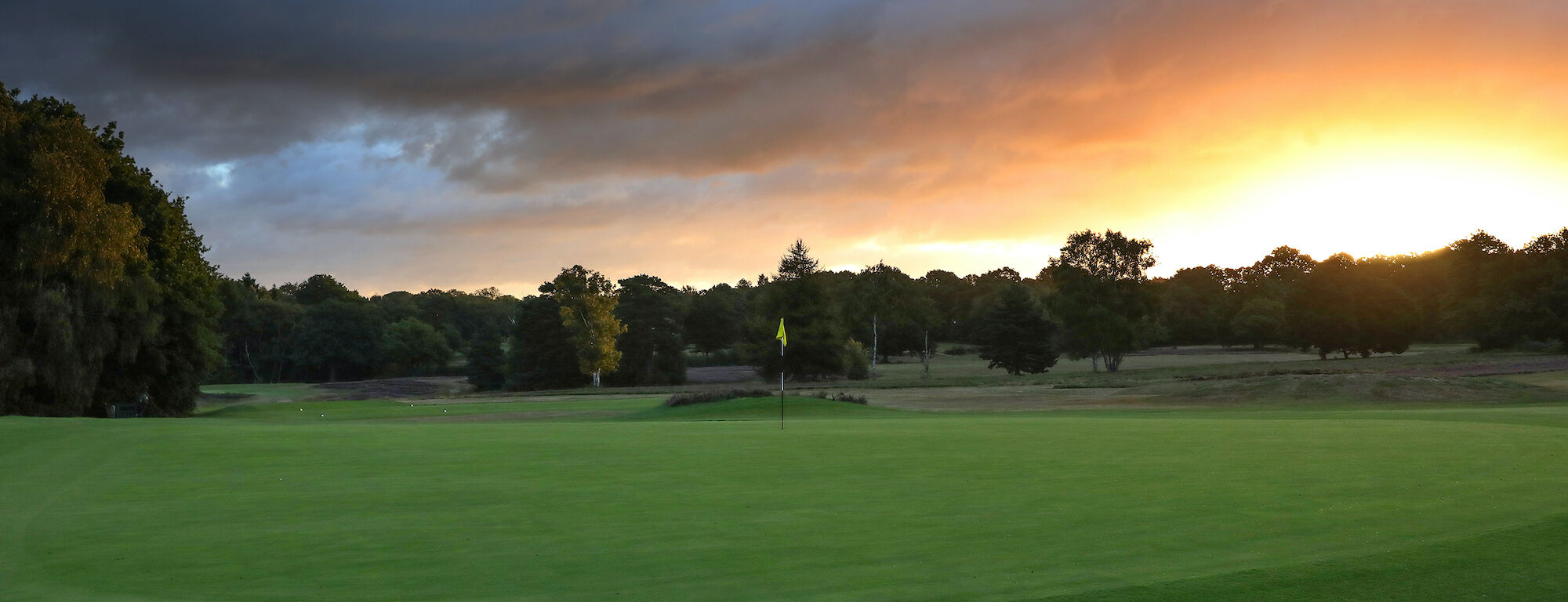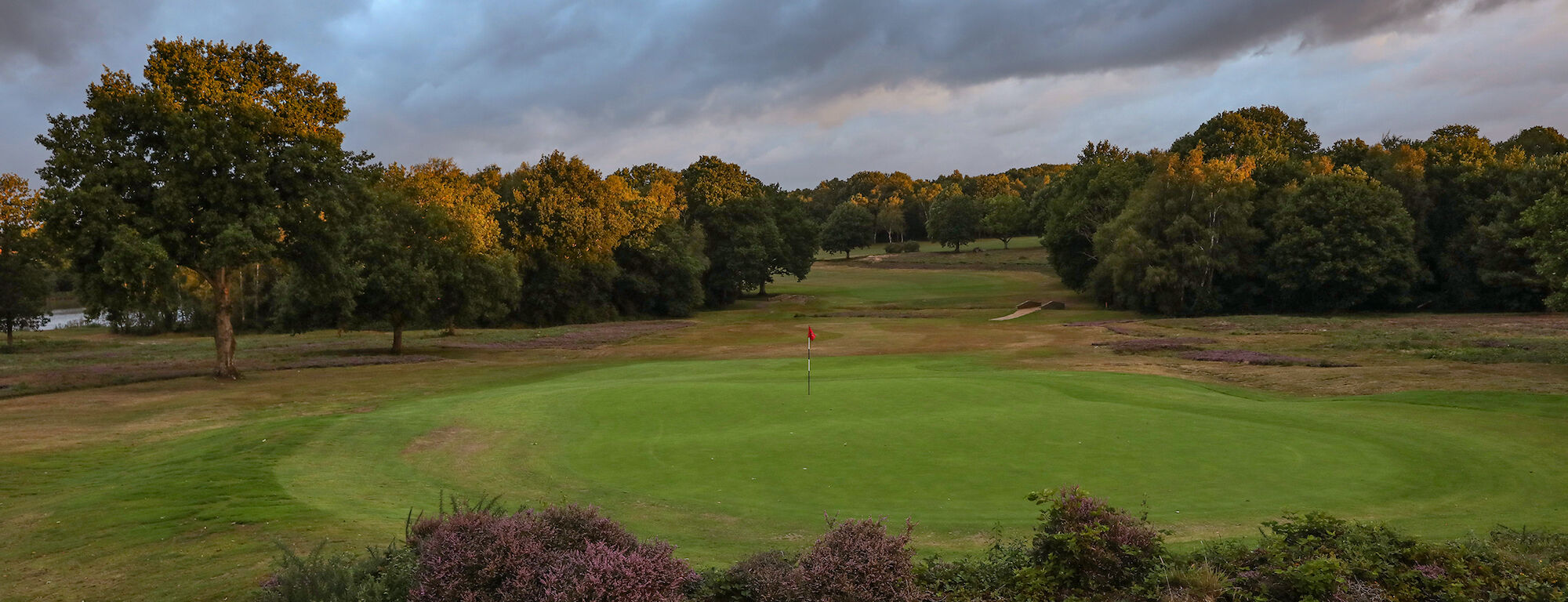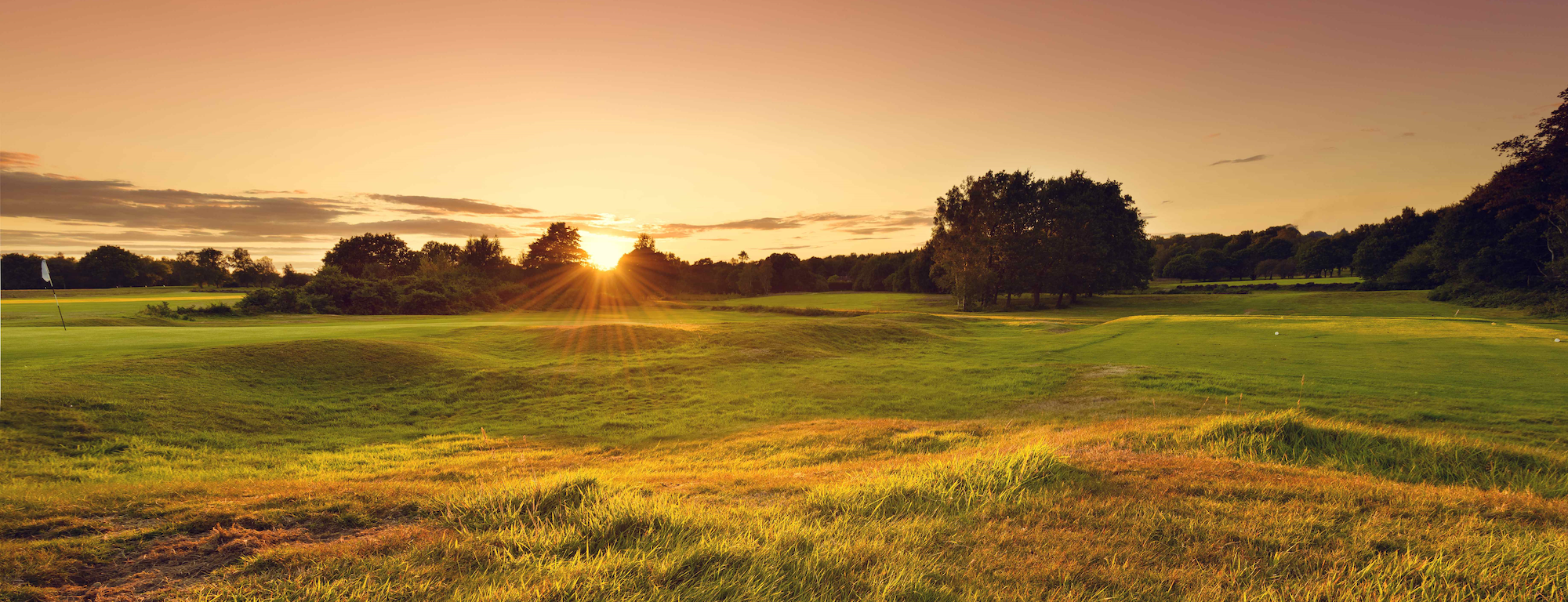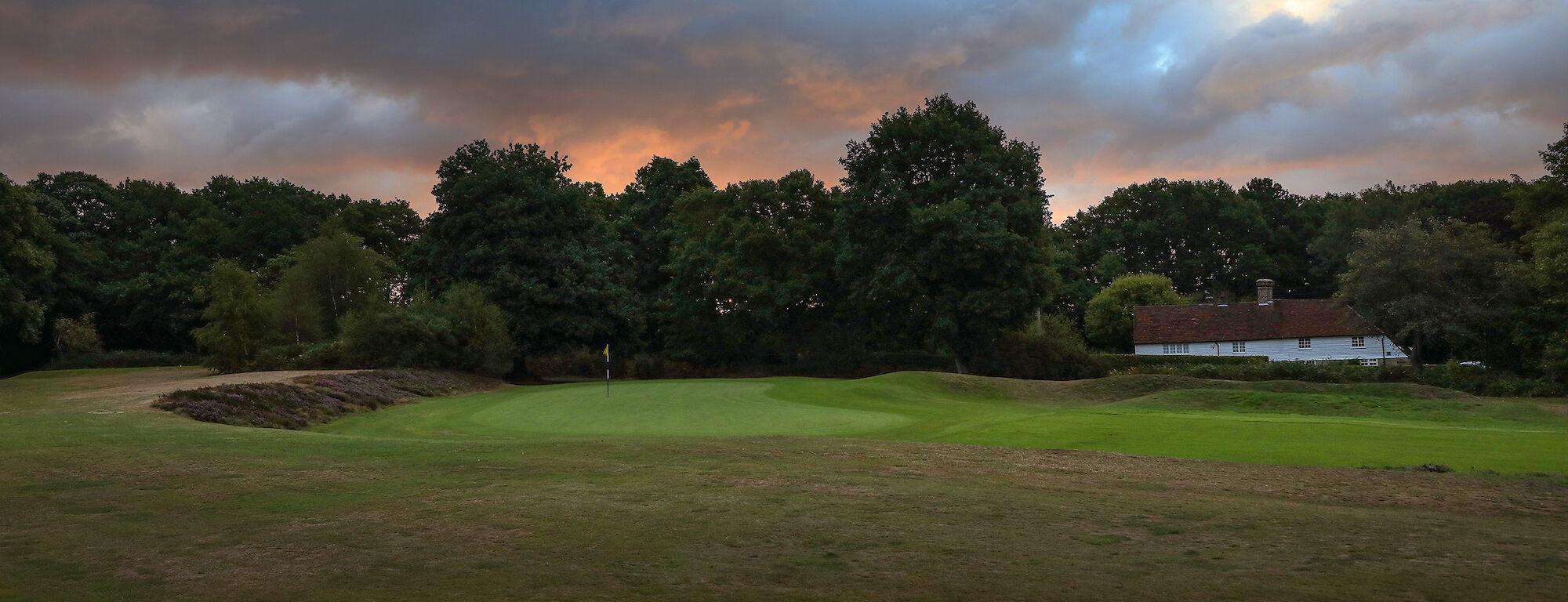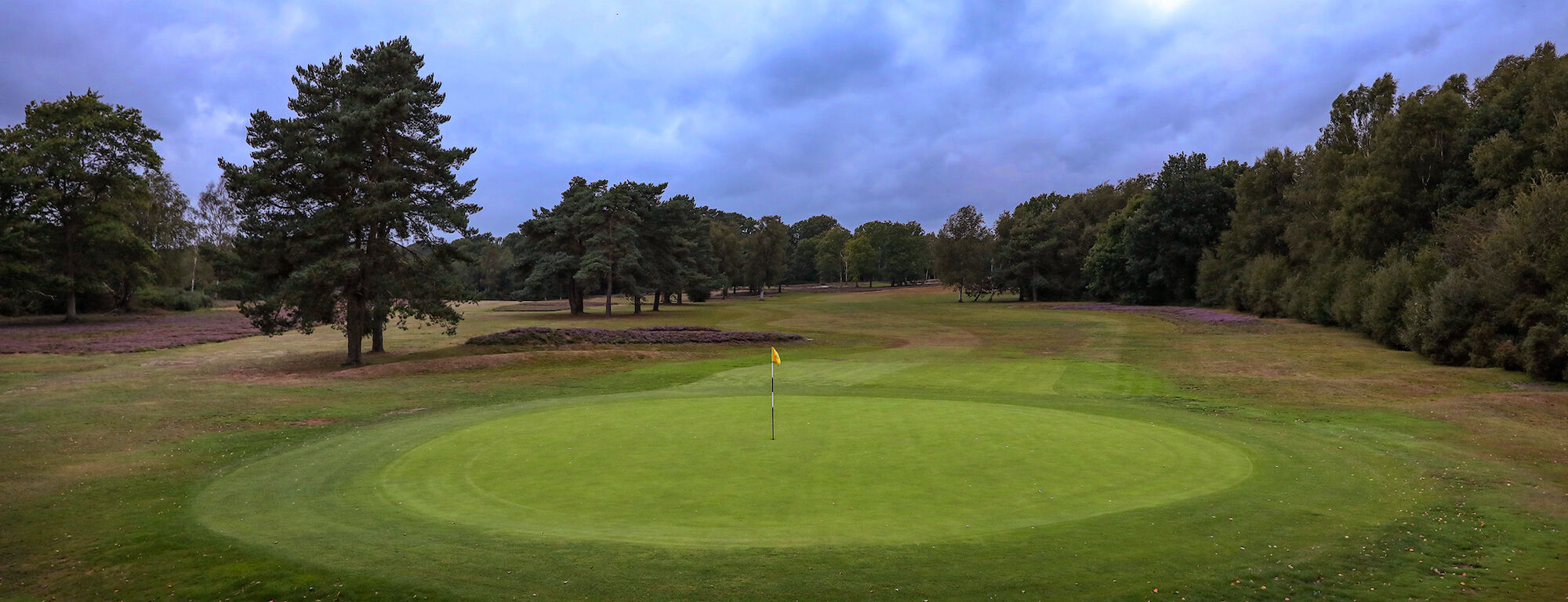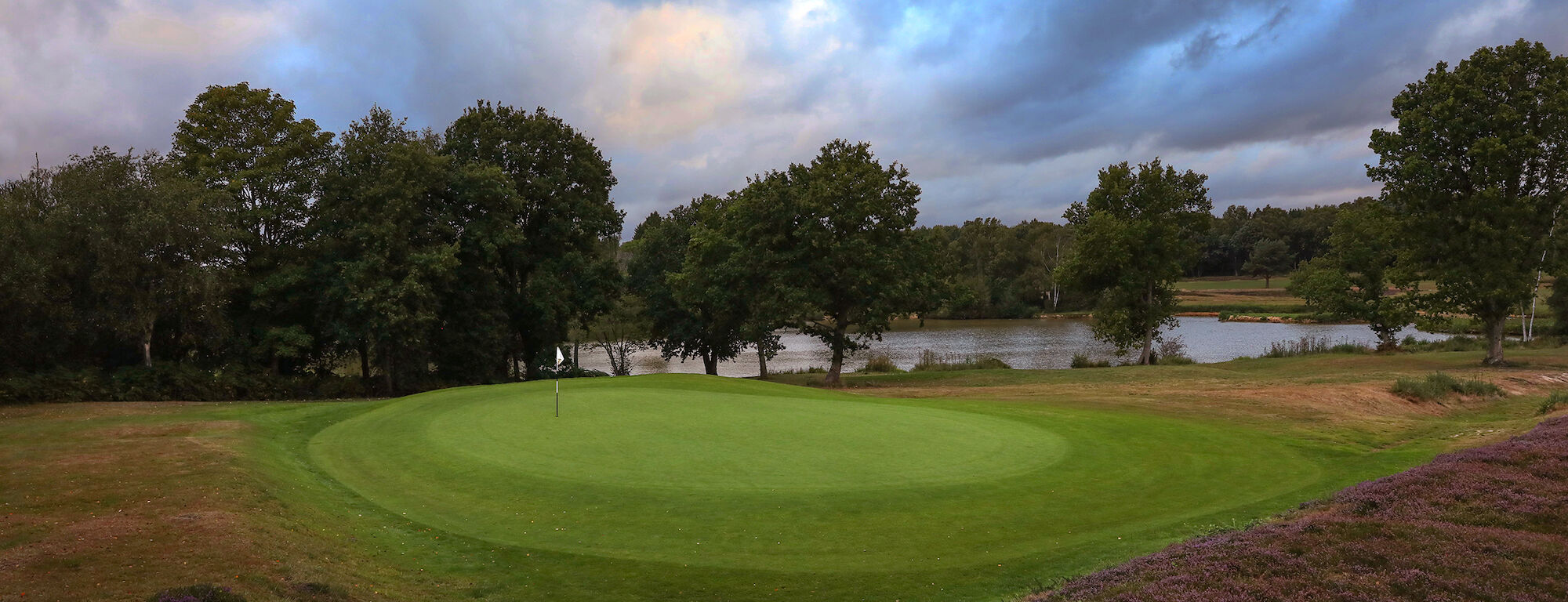Design & Architecture
Before 1904 Piltdown Common was a mass of gorse, bracken and heather, punctuated here and there by areas of grass and an occasional tree – a walk on Ashdown Forest or the Chailey Commons gives a pretty good idea of what it must have been like. It was quite a feat of imagination to see a possible golf course here. However, the Munsters did see it, and the professional at Royal Ashdown, Jack Rowe, was paid the princely sum of £1 (plus expenses) to design 18 holes. The tenant farmer, George Varnum, who lived in what is now the clubhouse, set about the work with a couple of helpers. The greens were the existing grass patches and the fairways were virtually no more than mown heather. At first only ten holes were in play, all on the northern side of Shortbridge Road; later the great JH Taylor (five time Open Champion) improved the design of seven holes over the road, and on this side created the current 4th, an impressive 200-yard par-three with a long carry over heather – now regarded as our “signature hole”.
There are no sand bunkers at Piltdown, but there is evidence in contemporary accounts and drawings that there were some in the early days. Possibly during WW1 their maintenance needed more manpower than was available. Without them the heather became the main defence, and much effort has been expended on maintaining it, and regenerating it where it was failing.
Over the last few years many trees have been cleared from the course returning it to its natural form, letting in more light and air, improving the chances of heather surviving, and opening up views of the course and the countryside, including the beautiful Piltdown Pond. All the greens have been relaid on much better drainage, and some during this process have been redesigned with added interest.
Philip Russell-Vick is the golf course architect of the modern era and responsible for the changes and improvements since 2000. He is a landscape architect by profession, and the Club is very lucky to have him as a member. There have been many changes on the golf course during this period, and not only has Philip designed the majority of these changes, he has also been the driving force behind getting them implemented to a high specification.
Many trees have been cleared, the heathland restored, new tees have been added, and the major change has seen the rebuilding of all 18 greens. During this work the greens have been re-shaped, run off areas have been created and extra heather mounds, humps and hollows have been added. The subtle changes to the course have all been instrumental in Piltdown recently being voted number 43 in a recent list of the Top 100 English courses.
Members and visitors of all standards have been universal in their praise for the design changes, and when Piltdown hosted the 2016 Sussex Open, the winner Paul Nessling from Cooden said “Piltdown was the best laid out and presented course we have played all year”.
The Club is certainly grateful to Philip for his time, effort and expertise, and will be sure to consult him in the future as and when further changes and improvements are planned.


